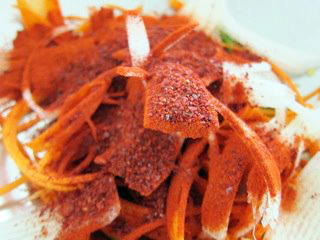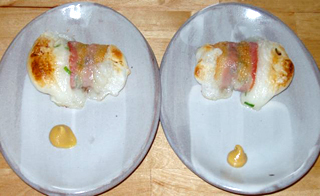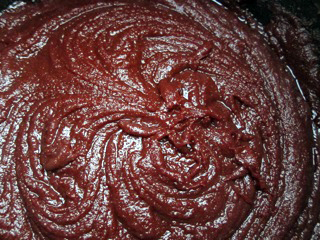
Chef Sunhui Chang showcases Fusebox beer + wine license notice. Photo: SunIm Chang
Asian cuisine in the Bay Area has a new crop of intensely passionate leaders with enough talent and culinary chops to lure Martha Stewart to the table. Anthony Myint and Danny Bowien stand behind big, bold Mission Chinese. Sylvan Mishima Brackett of PekoPeko Catering’s insanely articulate and authentic Japanese food will certainly land him on the map of grander things -- one hopes the rumors are true that he’s seeking his own location. And scheduled to open in January, FuseBox, the West Oakland eatery of Korean-born Sunhui Chang, will add fuel to the Korean food fire with housemade gochuchang, exquisitely crafted pickles, bacon mochi, and well-honed culinary passion.
 What’s pucker-worthy about Chang’s cuisine is its pickle-centric nature, many varieties of which he’s been sharing with the pickling community. He’s currently crafting several different varieties of kimchee, using the standard cabbage and daikon, and also rapini and turnip greens. He prides himself on making use of the “offal of vegetables” and thereby using ever part -- including radish greens, and reusing a vinegar pickle brine and the pickled garlic that flavors it. He dunks in the drink your standard vegetables such as cucumbers (see the recipe for Oiji below) and breakfast radish, but also more experimental concepts such as blueberries, summer squash, and fennel. FuseBox is equipped with some vegetable boxes that will grow some of the produce, and Chang is currently working with the People’s Grocery to have them grow additional vegetables for him. Everything pickled and fermented from Chang’s kitchen will be as closely sourced as possible.
What’s pucker-worthy about Chang’s cuisine is its pickle-centric nature, many varieties of which he’s been sharing with the pickling community. He’s currently crafting several different varieties of kimchee, using the standard cabbage and daikon, and also rapini and turnip greens. He prides himself on making use of the “offal of vegetables” and thereby using ever part -- including radish greens, and reusing a vinegar pickle brine and the pickled garlic that flavors it. He dunks in the drink your standard vegetables such as cucumbers (see the recipe for Oiji below) and breakfast radish, but also more experimental concepts such as blueberries, summer squash, and fennel. FuseBox is equipped with some vegetable boxes that will grow some of the produce, and Chang is currently working with the People’s Grocery to have them grow additional vegetables for him. Everything pickled and fermented from Chang’s kitchen will be as closely sourced as possible.
Of course, pickles aren’t the only things on the menu. Bacon-wrapped mochi are satisfyingly stretchy and smoky, and Chang will be grilling ko chu jang pork and chicken yakitori, and caking housemade tofu.
Chang takes regular trips to LA to procure quality, small-batch artisan soy sauce -- he says it’s the closest place to find it outside Korea. But another of the most impressive aspects of Chang’s cooking is that he makes his own gochuchang, the hot, salty and sweet fermented red pepper paste that is the basis of Korean cooking (akin to what miso is to Japanese cuisine). Few are the Korean chefs who make their own. Most Korean markets offer several different varieties, and if you’ve ever eaten Korean food, you’ve tasted it. It’s used in stir fries like bi bim bab, as a marinade for bulgogi, to flavor stews, as a condiment for crispy lettuce wraps, as the base for soups, and in many varieties of Korean pickles. I’d never tasted good gochuchang until I’d encountered Chang’s proprietary blend of glutinous rice, soybeans, red chili powder, and sugar. The sauce ferments for about 60-90 days.
